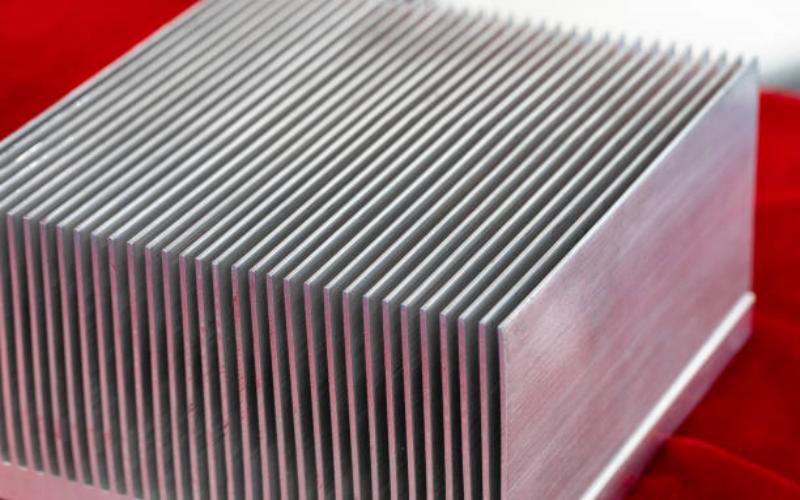Introduction
Heat sinks play a crucial role in managing the heat generated by electronic components. Whether you are an engineer, a DIY enthusiast, or simply curious about the intricacies of heat sink design, this article will provide you with a comprehensive guide on How to design a heat sink effectively. From understanding the basics to exploring advanced techniques, we have got you covered.
The Importance of Heat Sink Design
Before delving into the design process, it is essential to understand why heat sink design is so crucial. Electronic devices generate heat during operation, and if this heat is not dissipated efficiently, it can lead to performance degradation, premature component failure, and even safety hazards. A well-designed heat sink ensures that the heat is effectively transferred from the component to the surrounding environment, thus maintaining optimal operating conditions.
Understanding Heat Transfer
In order to design an efficient heat sink, it is vital to have a solid understanding of heat transfer mechanisms. There are three primary modes of heat transfer: conduction, convection, and radiation. Conduction involves the transfer of heat through direct contact, while convection refers to the transfer of heat through a fluid medium, such as air or liquid. Radiation, on the other hand, involves the emission of electromagnetic waves. A successful heat sink design maximizes all three modes of heat transfer.
Choosing the Right Heat Sink Material
The choice of material for your heat sink is crucial, as it directly impacts its thermal conductivity, weight, cost, and manufacturability. Aluminum and copper are the most commonly used materials due to their excellent thermal properties. Aluminum is lightweight and cost-effective, making it suitable for various applications. Copper, on the other hand, has higher thermal conductivity but is more expensive. Other materials, such as graphite and composite materials, offer specific advantages in certain scenarios.
Calculating Heat Sink Requirements
Before diving into the design phase, it is essential to calculate the heat sink requirements for your specific application. This involves determining the thermal resistance required to maintain the component's temperature within acceptable limits. Factors such as the power dissipation of the component, ambient temperature, and maximum allowed temperature all need to be considered. Various online calculators and software tools can assist in this process, simplifying the calculations.
Heat Sink Design Considerations
Designing an effective heat sink involves considering several key factors. The surface area of the heat sink is a critical parameter, as it directly impacts the heat dissipation capacity. Increasing the surface area through fins or other design elements enhances the heat transfer performance. Additionally, the size and shape of the heat sink should be optimized to ensure compatibility with the target application. It is also crucial to consider factors such as airflow, mounting method, and space constraints.
Enhancing Heat Sink Performance with Thermal Interface Materials
Thermal interface materials (TIMs) play a crucial role in improving the thermal conductivity between the heat sink and the component. They fill in microscopic air gaps and imperfections, ensuring efficient heat transfer. Commonly used TIMs include thermal pastes, thermal pads, and phase-change materials. Selecting the right TIM and applying it correctly can significantly enhance the overall performance of the heat sink.
Optimizing Heat Sink Manufacturing
During the manufacturing phase, it is essential to optimize the heat sink design for ease of production. This involves selecting suitable manufacturing processes such as extrusion, forging, or casting, depending on the complexity and volume requirements. The design should also consider factors such as material availability, cost, and compatibility with other system components. Collaboration with experienced manufacturers can help streamline the manufacturing process.
Testing and Validation
Once the heat sink design is finalized and manufactured, it is crucial to test and validate its performance. This involves conducting thermal tests to measure the temperature difference between the component and the ambient environment. Various testing methods, such as wind tunnel testing or computational fluid dynamics (CFD) simulations, can provide valuable insights into the heat sink's efficiency. If necessary, design iterations may be required to achieve optimal results.
Future Trends in Heat Sink Design
The field of heat sink design is constantly evolving, driven by advancements in technology and the increasing demand for more efficient cooling solutions. Some emerging trends include the use of additive manufacturing techniques to create intricate heat sink designs, the integration of phase-change materials directly into heat sinks, and the development of advanced cooling solutions using nanotechnology. Staying up-to-date with these trends can help engineers and designers push the boundaries of heat sink performance.
heat sink design, heat transfer, material selection, heat sink requirements, heat sink performance, thermal interface materials, heat sink manufacturing, testing and validation, future trends in heat sink design How to Design a Heat Sink: A Comprehensive Guide This informative article provides a comprehensive guide on how to design a heat sink effectively. From understanding the basics to exploring advanced techniques, learn how to optimize heat transfer, choose the right materials, calculate heat sink requirements, enhance performance, and more.

